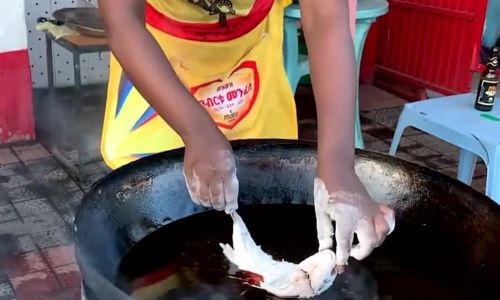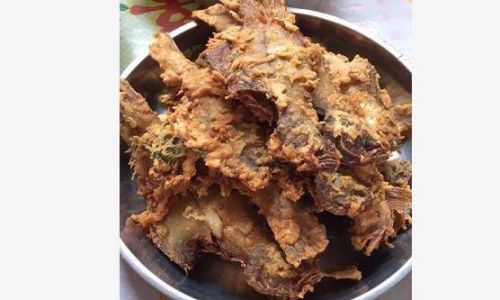Frying fish is a culinary delight that can elevate any meal from ordinary to extraordinary. The crisp golden exterior, the moist and flavorful interior – it’s a dish that satisfies both the eyes and the palate. However, achieving this perfection can often be challenging, especially when dealing with the common dilemma of the fish sticking to the pan, leading to a messy, broken-up, and potentially burnt final product. In this comprehensive guide, we will delve into the intricacies of how to fry fish without it sticking to the pan, ensuring your fish dishes are not only delicious but also visually appealing.
Understanding the Science Behind Sticking
Before diving into the practical tips, it’s crucial to understand why fish sticks to the pan. The primary reason is the interaction between the proteins in the fish and the surface of the cooking utensil. When fish is placed into hot oil, its proteins begin to denature and can form a sticky layer that adheres to the pan, especially if the pan is not properly prepared. Additionally, if the oil is not hot enough, it can cause the fish to release moisture, creating steam that further promotes sticking.
Preparing Your Fish: The Foundation of Success
-
Choosing the Right Fish: Not all fish are created equal when it comes to frying. Firmer-fleshed fish like halibut, cod, and tilapia hold up well to frying and are less prone to breaking apart. Flaky fish like salmon or trout can also be fried, but they require a bit more finesse in handling.
-
Pat Dryness: Excess moisture is your enemy when frying fish. Use paper towels to thoroughly pat the fish dry. This removes surface water that can cause steam and promote sticking.
-
Seasoning Lightly: Season your fish lightly with salt and pepper. Avoid using too much flour or breadcrumbs as a coating, as this can create a thick layer that may not adhere well to the fish and can increase the chances of sticking.

-
Coating Techniques: If you prefer a crispy crust, consider using a thin layer of cornstarch, rice flour, or a blend of fine breadcrumbs and a pinch of baking powder (which helps create air pockets for a lighter texture). Make sure the coating is evenly distributed and not too thick.
Preparing Your Pan and Oil: The Secret to a Non-Stick Surface
-
Choosing the Pan: Non-stick pans are a great option for frying fish, but they are not the only choice. A well-seasoned cast-iron skillet or a stainless steel pan with a good layer of fat can also work wonders. Avoid using aluminum pans, as they can react with acidic components in some marinades or fish juices, potentially altering the flavor.
-
Preheating the Pan: Always preheat your pan over medium-high heat before adding oil. This ensures that the pan is hot enough to create an immediate sear on the fish, which helps it release from the surface.
-
Selecting the Oil: The type of oil you use is crucial. Neutral oils with high smoke points, such as peanut oil, canola oil, or refined avocado oil, are ideal. These oils can reach high temperatures without smoking, providing an even cooking environment. Avoid using olive oil for frying fish, as its lower smoke point can cause it to smoke and impart unwanted flavors.
-
Adding Enough Oil: Ensure the oil covers the bottom of the pan by about 1/4 inch. This depth allows for even frying and prevents the fish from directly contacting the pan surface, reducing the chances of sticking.
The Frying Technique: Precision and Patience
-
Testing the Oil Temperature: Before adding the fish, test the oil’s temperature by dropping a small piece of breadcrumb or a corner of a paper towel into it. If it sizzles and browns quickly, the oil is ready.
-
Adding the Fish: Place the fish in the pan gently, avoiding splashing hot oil. If you’re frying multiple pieces, do not overcrowd the pan. This will lower the oil temperature and increase the likelihood of sticking. Work in batches if necessary.

-
Don’t Disturb: Once the fish is in the pan, resist the urge to move it immediately. Allow it to cook undisturbed for about 2-3 minutes on each side, or until it’s golden brown and crispy. Moving it too soon can disrupt the forming crust and cause sticking.
-
Flipping with Care: When it’s time to flip, use a spatula with a thin, flexible blade. Slide it gently underneath the fish, supporting it with your other hand if needed, to ensure a clean flip.
Finishing Touches and Troubleshooting
-
Finishing with High Heat: After flipping, you can briefly increase the heat to finish crisping the exterior without overcooking the interior. Keep a close eye on it to prevent burning.
-
Troubleshooting Common Issues:
- Fish is Sticking: If the fish sticks despite your best efforts, it might be due to an oil temperature that’s too low or a pan that’s not hot enough. Adjust accordingly and try again with the next batch.
- Overcooking: Use a thermometer to ensure the oil stays within the optimal frying range (around 350-375°F). Keep an eye on the color and texture of the fish to avoid overcooking.
- Greasy Fish: If your fish is too greasy, it might be because the oil was not hot enough when you started frying. The fish absorbed more oil as it cooked.
Serving and Enjoying
Once your fish is perfectly fried, transfer it to a plate lined with paper towels to drain any excess oil. Serve immediately while hot, paired with your favorite sides like lemon wedges, tartar sauce, or a fresh green salad. The key to enjoying fried fish is to appreciate its simplicity – let the fresh, crispy texture and delicate flavor shine without overcomplicating it with too many condiments.
In conclusion, frying fish without it sticking to the pan is an art that requires attention to detail, the right tools, and a bit of practice. By following the tips outlined above, you’ll be well on your way to mastering this culinary skill and creating memorable fish dishes that are as visually appealing as they are delicious. Happy frying!





0 comments